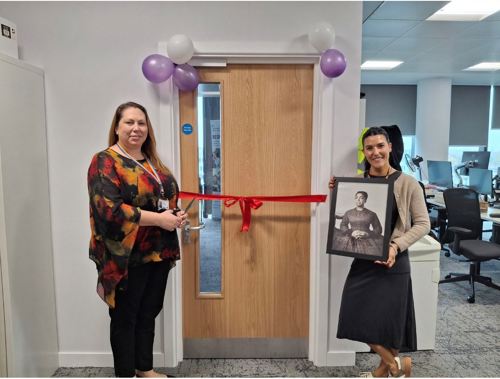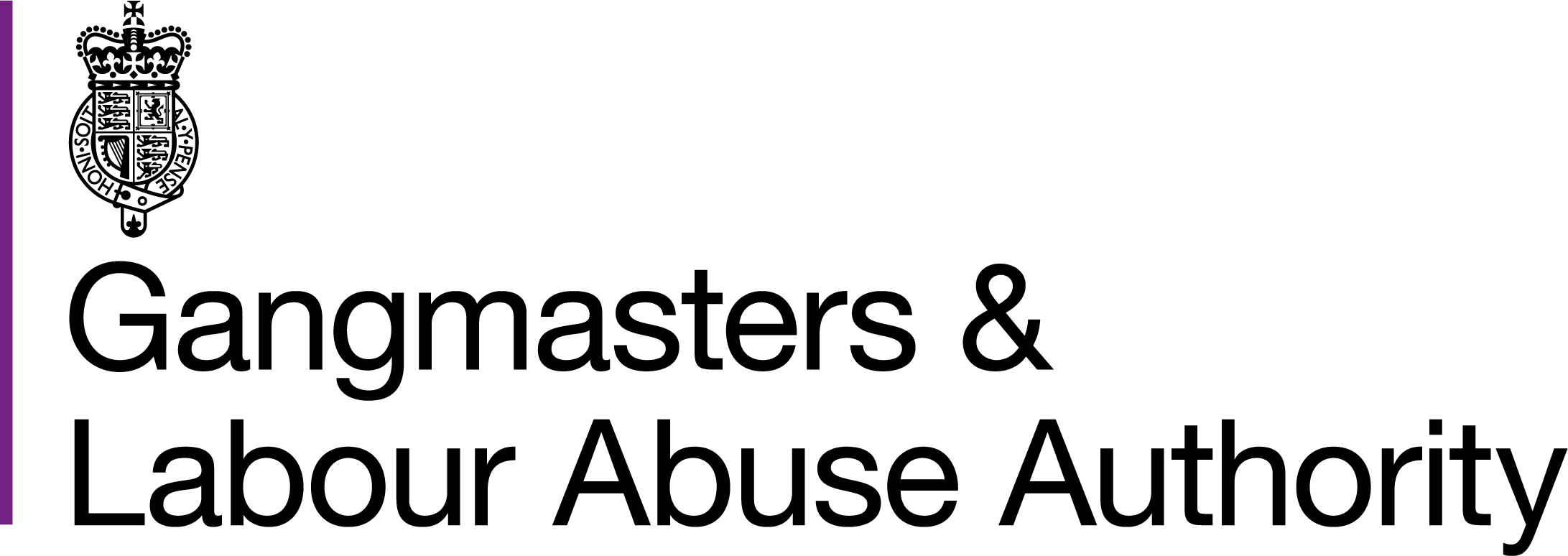GLAA names meeting room after Mary Prince for Anti-Slavery Day
17th October 2025
The Gangmasters and Labour Abuse Authority held a ceremony to formally open a new meeting room after an enslaved woman, Mary Prince, who went on to present her own petition in parliament calling for herself and other women who were enslaved to be free for anti-slavery day.
Every year on 18 October it’s Anti-Slavery Day, a nationwide awareness day raising awareness that people are still trapped in conditions of modern slavery, a crime that is hidden in plain sight.

Who is Mary Prince?
Mary Prince was a woman who pioneered the anti-slavery movement and even released a book talking on her experience.
Born in Bermuda to parents who were both enslaved, in 1788 her mother and siblings were sold as household servants to Captain George Darrell.
At the age of 12, Mary was sold for £38 sterling to Captain John Ingham. Mary's new enslaver and his wife were cruel and often lost their tempers, and Mary and others were often severely flogged for minor offences.
Ingham sold Mary in 1803 to a saltraker, Robert Darrell, who owned salt-ponds. The production was labour intensive, forced to work up to 17-hours straight each day.
Mary returned to Bermuda in 1812, where Robert Darrell had moved with his daughter. While here, she said in her account that she was physically abused by Darrell which caused her to leave and was hired out to Cedar Hill for a time, where she earned money for her enslaver by washing clothes.
In 1815, Mary was sold a fourth time, to John Adams Wood of Antigua for $300. She worked in his household as a domestic slave, attending the bedchambers, nursing a young child, and washing clothes. There she began to suffer from rheumatism, which left her unable to work. When Adams Wood was travelling, Mary earned money for herself by taking in washing and by selling coffee, yams and other provisions to ships.
In Antigua, she joined the Moravian Church, where she also attended classes and learned to read.
In December 1826, Prince married Daniel James, a former enslaved man who had bought his freedom by saving money from his work. He worked as a carpenter. According to Mary, her floggings increased after her marriage because Adams Wood and his wife did not want a free black man living on their property.
Mary moves to London
In 1828 Adams Wood and his family travelled to London, visiting and arranging their son's education, and to bring their daughters home to the islands. At her request, they took Mary Prince with them as a servant. Although she had served the Woods for more than ten years, they had increasing conflict in England. Four times Adams Wood told her to obey or leave. They gave her a letter that nominally gave her the right to leave but suggested that no one should hire her.
After leaving the household, Prince took shelter with the Moravian church in Hatton Garden. Within a few weeks, she started working occasionally for Thomas Pringle, an abolitionist writer, and Secretary to the Anti-Slavery Society, which aided black people in need. Prince found work with the Forsyth household, but the couple moved away from England in 1829. The Adams Woods also left England in 1829 and returned with their daughter to Antigua. Pringle tried to arrange to have Adams Wood manumit Prince, so she would have legal freedom.
Mary’s fight for freedom
In 1829 Adams Wood refused either to manumit (release from slavery) Mary Prince or allow her to be purchased out of his control. His refusal to sell or free her meant that as long as slavery remained legal in Antigua, Prince could not return to her husband and friends without being re-enslaved and submitting to Adams Wood's power. After trying to arrange a compromise, the Anti-Slavery Committee proposed to petition Parliament to grant Prince's manumission but failed. At the same time, a bill was introduced to free all enslaved people from the West Indies in England whose enslavers had freely brought them there; it did not pass but was an indication of growing anti-slavery sentiment.
In December 1829, Pringle hired Prince to work in his own household. Encouraged by Pringle, Prince arranged for her life narrative to be transcribed by writer Susanna Strickland. Pringle served as editor, and her book was published in 1831 as The History of Mary Prince. The book caused a commotion as it was the first account published in Great Britain of a Black enslaved woman's life; at a time when anti-slavery agitation was growing, her first-person account touched many people. In the first year, it sold out three printings.
Mary stood firm to try and make life better for herself and others who were enslaved by sharing her story and calling for change and naming the meeting room after her is a reminder of this, as well as a reminder that we still have a long way to go to stop people being exploited.
Our CEO Elysia McCaffrey said: “It was wonderful to be able to formally open Mary Prince and unveil a photo of her in our meeting room, and it’s important that we understand the sentiment behind this.
“As an organisation, we play a vital role investigating labour exploitation and modern slavery offences in England and Wales.
“According to Hope for Justice, there are around 110,000 people in the UK who are being exploited. These people are trapped in forced labour, domestic servitude, sexual exploitation, forced marriage and even organ harvesting.
“It’s a sad reality that centuries after Mary Prince fought for freedom, that people across the UK and the world are still being exploited. The work that we do is invaluable and this Anti-Slavery Day I want us to bear in mind that we need to continue to spot the signs, educate those around us and act where we can, to stop this heinous crime once and for all.”
